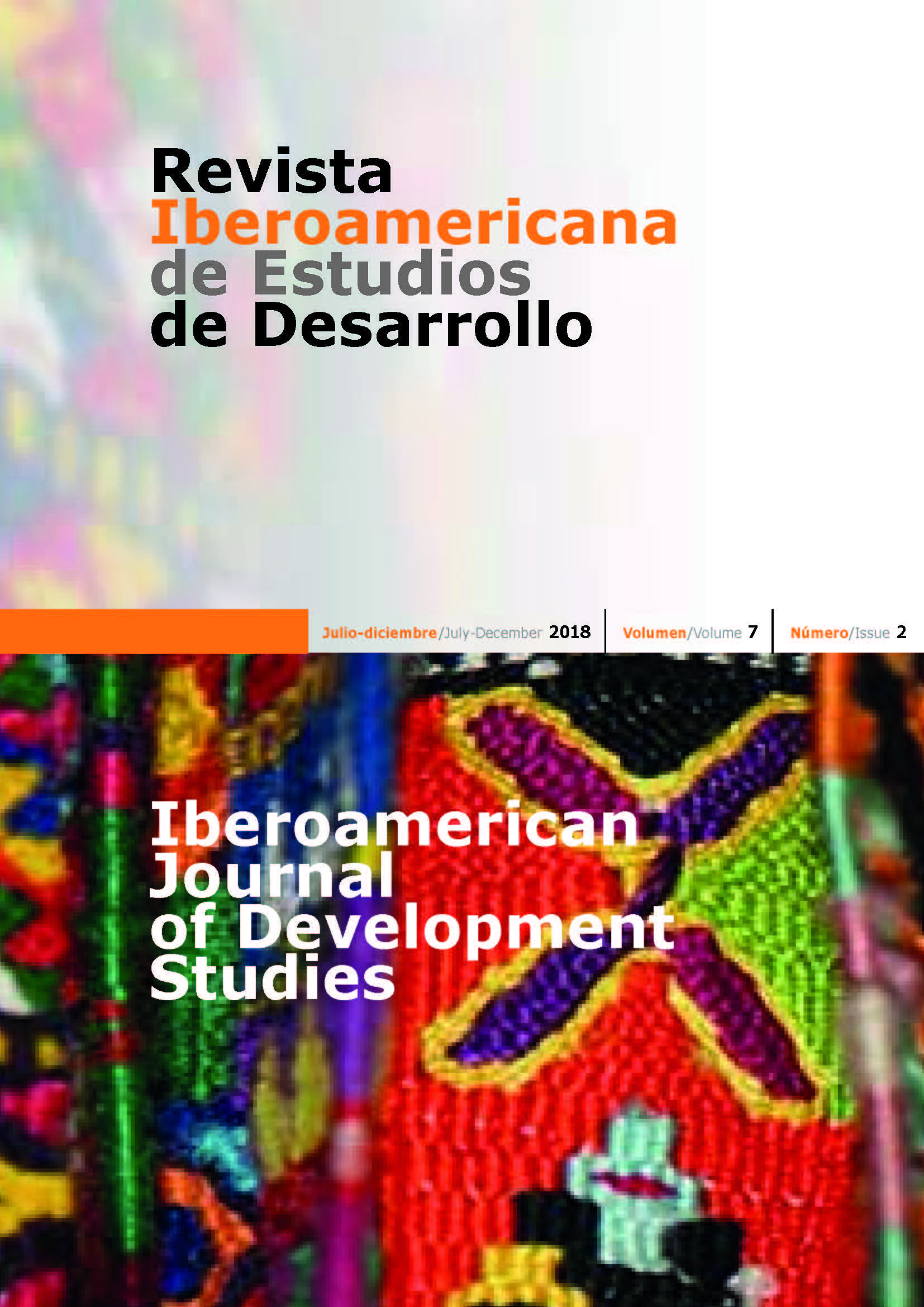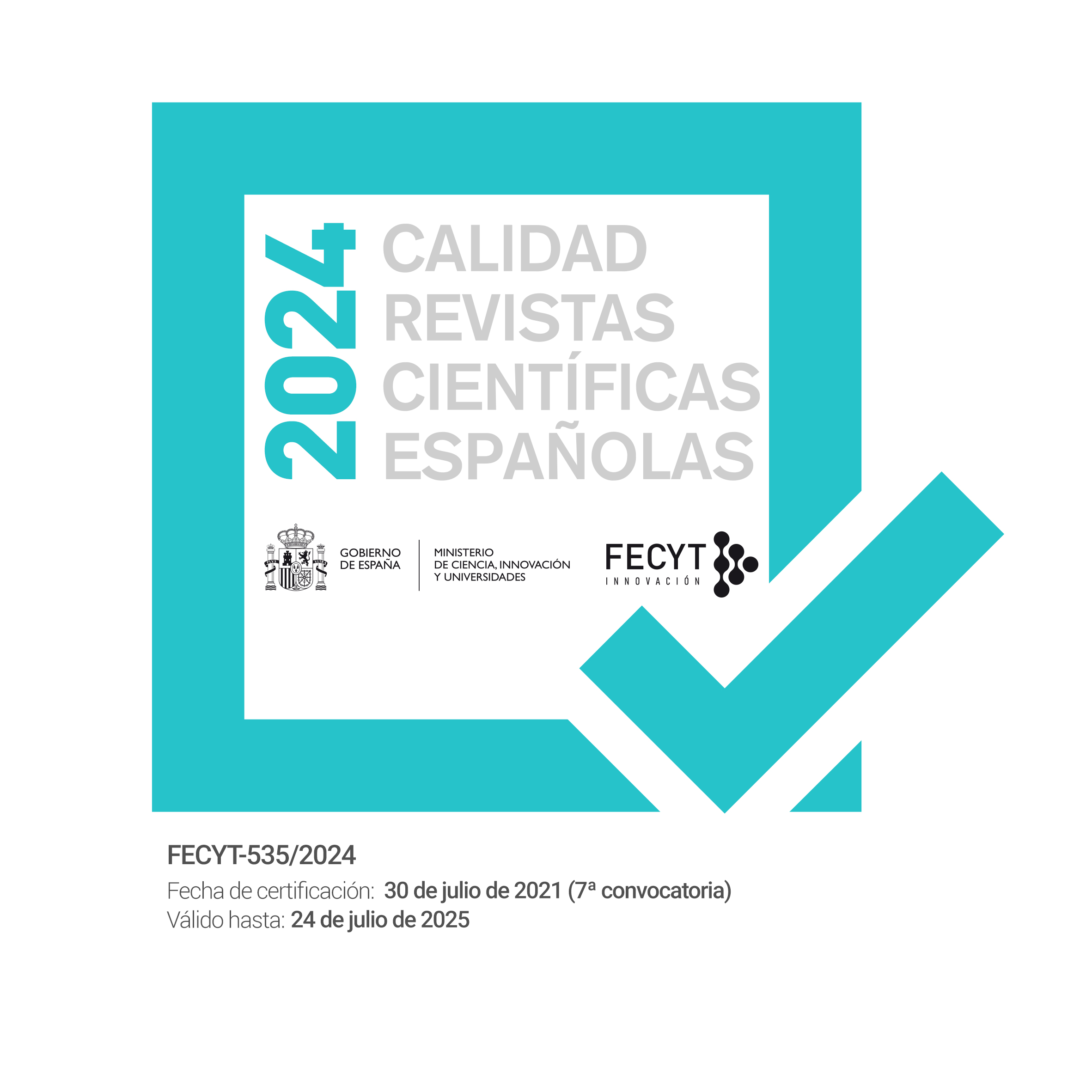Measuring resilience properties of household livelihoods and food security outcomes in the risky environments of Ethiopia
DOI:
https://doi.org/10.26754/ojs_ried/ijds.252Palabras clave:
resiliencia de los sustentos diarios, teoría de la resiliencia, teoría de carteras, seguridad alimentaria, EtiopíaResumen
Con este estudio de caso, realizado en la región de Amhara (Etiopía), se pretende contribuir a los esfuerzos para medir y evaluar el grado de resistencia de los sustentos económicos de los hogares construidos en ambientes de riesgo. Así, se proporcionan nuevos conocimientos para evaluar la vulnerabilidad de los medios de subsistencia y diseñar programas de fortalecimiento de la resiliencia en áreas de crisis alimentaria prolongada. Basándonos en la teoría de la resiliencia aplicada a los sistemas socioecológicos, y aplicando la teoría moderna de carteras, adaptamos y medimos las cuatro propiedades de la resiliencia a los sistemas de medios de subsistencia y probamos las relaciones esperadas entre las propiedades predichas por la teoría de la resiliencia. Los sistemas de sustento de los hogares exhibieron el patrón esperado de conectividad creciente con el aumento de la riqueza (ingresos alimentarios). Del mismo modo, la resistencia de los hogares a la inseguridad alimentaria mejora con el aumento de la diversidad de opciones de medios de subsistencia y la disminución de la diversidad a partir del incremento de la conectividad del sistema. Este estudio muestra el uso de un conjunto de métricas con el fin de evaluar las propiedades de resiliencia de los sustentos del hogar basado en factores clave de conducción.Descargas
Citas
ADGER WN (2000). Social and ecological resilience: are they related? Prog. Hum. Geogr. 24:347-364.
ALINOVI L, MANE E, ROMANO D (2009). Measuring household resilience to food insecurity: Application to Palestinian households. EC-FAO Food Secur. Programme Rom.
ALLISON HE, HOBBS RJ (2004). Resilience, adaptive capacity, and the lock-in trap of the western Australian agricultural region. Ecol. Soc. 9.
AMHARA DPFSPCO (2015). Food Security & Agricultural Assessment Report Meher 2015. Amhara National Regional State. Disaster Prevention and Food Security Programme Coordination Office, Early Warning and Response Process, Bahir Dar, Ethiopia.
BERHANU W, COLMAN D, FAYISSA B (2007). Diversification and livelihood sustainability in a semi-arid environment: A case study from southern Ethiopia. J. Dev. Stud. 43:871-889.
BERKES F, SEIXAS CS (2005). Building Resilience in Lagoon Social-Ecological Systems: A Local-level Perspective. Ecosystems 8:967-974. doi: https://doi.org/10.1007/s10021-005-0140-4.
BLOCK S, WEBB P (2001). The dynamics of livelihood diversification in post-famine Ethiopia. Food Policy 26:333-350.
BOFED (2015). The 2014/15 Budget Year Annual Statistical Bulletin. Bureau of Finance and Economic Development, Commission of Plan, Bahir Dar.
BOHENSKY E, LYNAM T (2005). Evaluating responses in complex adaptive systems: insights on water management from the Southern African Millennium Ecosystem Assessment (SAfMA). Ecol. Soc. 10, 11.
BOHLE H-G (1993). The geography of vulnerable food systems. Coping Vulnerability Crit. Case Stud. Food-Insecure People Places Freibg. Stud. Dev. Geogr. 1:15-29.
BRAUN J von, ROSEGRANT MW, PANDYA-LORCH R, COHEN MJ, CLINE SA (eds.) (2005). New risks and opportunities for food security: scenario analysis for 2015 and 2050, 2020 discussion paper. Internat. Food Policy Research Inst., Washington, DC.
CANALI M, SLAVIERO F (2010). Food insecurity and risk management of smallholder farming systems in Ethiopia, in: Ninth European IFSA Symposium. Vienna (Austria), pp. 4-7.
CARPENTER SR, WESTLEY F, TURNER MG (2005). Surrogates for Resilience of Social-Ecological Systems. Ecosystems 8:941-944. doi: https://doi.org/10.1007/s10021-005-0170-y .
CARPENTER S, WALKER B, ANDERIES JM, ABEL N (2001). From Metaphor to Measurement: Resilience of What to What? Ecosystems 4:765-781. doi: https://doi.org/10.1007/s10021-001-0045-9.
CARTER MR, LITTLE PD, MOGUES T, NEGATU W et al. (2004). Shocks, sensitivity and resilience: Tracking the economic impacts of environmental disaster on assets in Ethiopia and Honduras. BASIS Res. Program Poverty Inequal. Dev. Wash. DC US Agency Int. Dev.
DERCON S (2002). Income risk, coping strategies, and safety nets. World Bank Res. Obs. 17:141-166.
DERCON S, HODDINOTT J (2005). Livelihoods, growth, and links to market towns in 15 Ethiopian villages.
DRMFSS (2012). Woreda Disaster Risk Profiling Report for Tach Gayint District. Ministry of Agriculture and Rural Development, Disaster Risk Management & Food Security Sector, Addis Ababa.
FRANKENBERGER T, LANGWORTHY M, SPANGLER T, NELSON S, CAMPBELL J, NJOKA J (2012). Enhancing resilience to food security shocks. White Pap. Draft TANGO Int. Tucson.
FRASER ED, MABEE W, FIGGE F (2005). A framework for assessing the vulnerability of food systems to future shocks. Futures 37:465-479.
GUNDERSON LH, FOLKE C, JANSSEN M et al. (2006). Generating and fostering novelty. Ecol. Soc. 11, 50.
HOLDEN S, SHIFERAW B, PENDER J (2004). Non-farm income, household welfare, and sustainable land management in a less-favoured area in the Ethiopian highlands. Food Policy 29:369-392.
HOLLING CS (1973). Resilience and stability of ecological systems. Annual Review of Ecology and Systematics 4:1-23.
HOLLING CS (2001). Understanding the complexity of economic, ecological, and social systems. Ecosystems 4:390-405.
LE VALLĚ J-C, PROQUEST CO, CARLETON UNIVERSITY. DISSERTATION. GEOGRAPHY (2007). Achieving food security through food system resilience: the case of Belize. Ottawa.
LEMI A (2005). The dynamics of livelihood diversification in Ethiopia revisited: evidence from panel data. Available SSRN 817104.
LUERS AL, LOBELL DB, SKLAR LS, ADDAMS CL, MATSON PA (2003). A method for quantifying vulnerability, applied to the agricultural system of the Yaqui Valley, Mexico. Glob. Environ. Change 13:255-267. doi: https://doi.org/10.1016/S0959-3780(03)00054-2.
MANYENA SB (2006). The concept of resilience revisited. Disasters 30:434-450.
MARKOWITZ H (1952). Portfolio selection. J. Finance 7:77-91.
NIEHOF A (2010). Food, diversity, vulnerability and social change: Research findings from insular Southeast Asia, Mansholt Publication Series. Wageningen Academic Publishers, The Netherlands.
PERZ SGL (2005). The importance of household asset diversity for livelihood diversity and welfare among small farm colonists in the Amazon. J. Dev. Stud. 41:1193-1220. doi: https://doi.org/10.1080/00220380500170899 .
PINGALI P, ALINOVI L, SUTTON J (2005). Food security in complex emergencies: enhancing food system resilience. Disasters 29, S5-S24.
SEAMAN JA, SAWDON GE, ACIDRI J, PETTY C (2014). The Household Economy Approach. Managing the impact of climate change on poverty and food security in developing countries. Clim. Risk Manag. 4-5:59-68. doi: https://doi.org/10.1016/j.crm.2014.10.001.
SPEDDING CRW (1988). A systems approach to agriculture, in: An Introduction to Agricultural Systems. Springer, pp. 15-40.
TGWA (2014). District Basic Information Report for Development Planning. Tach Gayint Woreda Administration Office, Tach Gayint.
TINCANI LS (2012). Resilient Livelihoods: Adaptation, Food Security and Wild Foods in Rural Burkina Faso. School of Oriental and African Studies.
VAITLA B, TESFAY G, ROUNSEVILLE M, MAXWELL D (2012). Resilience and livelihoods change in Tigray, Ethiopia. Somerv. MA Tufts Univ. Feinstein Int. Cent.
WALKER B, GUNDERSON L, KINZIG A, FOLKE C, CARPENTER S, SCHULTZ L (2006). A handful of heuristics and some propositions for understanding resilience in social-ecological systems. Ecol. Soc. 11, 13.
WITT R, WAIBEL H (2009). Climate Risk and Farming Systems In Rural Cameroon. ResearchGate.
Descargas
Publicado
Cómo citar
Número
Sección
Licencia
Derechos de autor 2018 Tesfahun Asmamaw Kasie, Enyew Adgo Tsegaye, Antonio Grandío-Botella, Isabel Giménez-García

Esta obra está bajo una licencia internacional Creative Commons Atribución-NoComercial-SinDerivadas 4.0.






